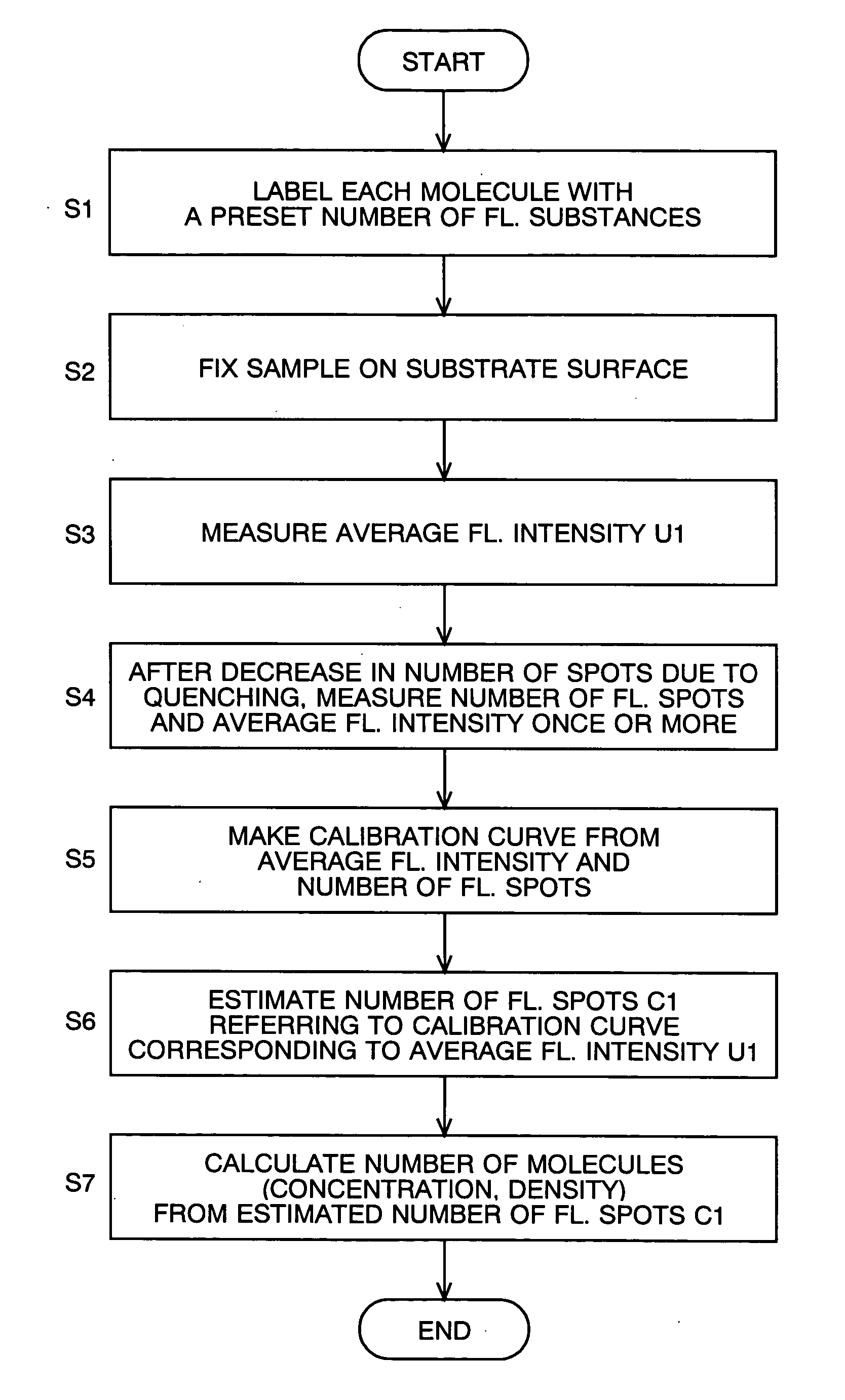Method of measuring number of molecules or molecular density of a sample fixed on a substrate surface
a technology of molecular density and substrate surface, which is applied in the direction of fluorescence/phosphorescence, instruments, biochemistry apparatus and processes, etc., can solve the problems of difficult to prepare many standard samples for various testing conditions, difficult to prepare standard samples that are stable and have very small dilution errors, and actually difficult to achieve, so as to promote the reduction of fluorescent light of fluorescent substances, enhance the strict relationship, and enhance the effect of the estimation of the number of fluorescent spots
- Summary
- Abstract
- Description
- Claims
- Application Information
AI Technical Summary
Benefits of technology
Problems solved by technology
Method used
Image
Examples
example 1
[0037] An example of measuring the density of DNA using the method of the present invention is described. The 5′-terminal of a DNA (20mer) is labeled with Cy-5, and the. 3′-terminal is labeled with Biotin. The substrate 12b is a quartz slide glass which has little background light. After cleansing the quartz slide glass, Biotin-BSA is non-specifically adsorbed, and Streptavidin is reacted. Using the fixing agent, the labeled DNA with a concentration of 100 pM is fixed on the substrate 12b. The sample 12a is air-tightly sealed with a cover glass 12c and a sealant 12d of manicure. A prism total-reflection fluorescent microscope is used to measure the fluorescence. A laser of 635 nm wavelength is used as the exciting light, and its incident angle is set at 69°. A cooled CCD sensor with an image intensifier tube is used for the detector 15. The CCD sensor has the resolution of 200×200 pixels.
[0038] An example of the fluorescence image (Cy-5 fluorescence) obtained in the above measureme...
PUM
| Property | Measurement | Unit |
|---|---|---|
| incident angle | aaaaa | aaaaa |
| molecular density | aaaaa | aaaaa |
| fluorescent | aaaaa | aaaaa |
Abstract
Description
Claims
Application Information
 Login to View More
Login to View More - R&D
- Intellectual Property
- Life Sciences
- Materials
- Tech Scout
- Unparalleled Data Quality
- Higher Quality Content
- 60% Fewer Hallucinations
Browse by: Latest US Patents, China's latest patents, Technical Efficacy Thesaurus, Application Domain, Technology Topic, Popular Technical Reports.
© 2025 PatSnap. All rights reserved.Legal|Privacy policy|Modern Slavery Act Transparency Statement|Sitemap|About US| Contact US: help@patsnap.com



